Iron Cross II Class, by F. Zimmermann, #6, L24
SKU: 01.GTR.0101.111.22
Estimated market value:
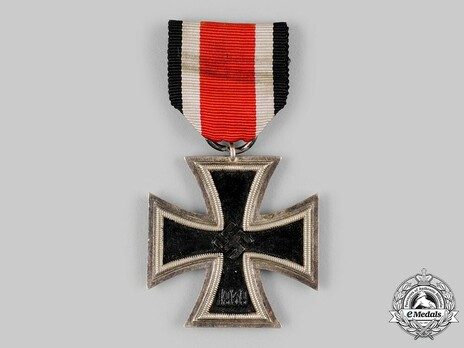
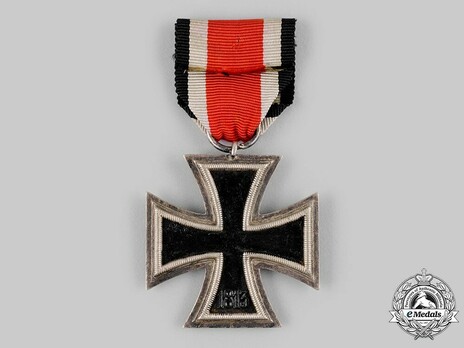
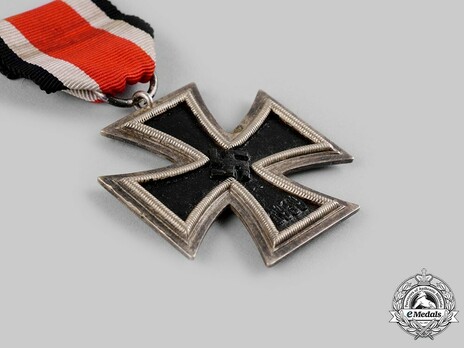
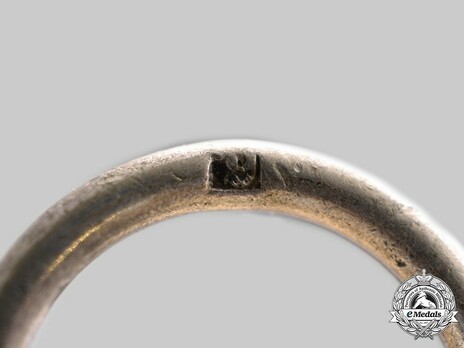
Estimated market value:
Attributes
Physical Description
Crosses by F. Zimmermann are fairly common. The company used two different frames, the second frame potentially being produced with the same, reworked die. Early type 1 frames can be found unmarked, later ones marked “6” on the ribbon ring, while type 2 frames are always marked “6”. Type 2 frames are about 3 to 4 mm higher and wider, and about a gram heavier, than type 1 frames. It is noteworthy that F. Zimmermann’s PKZ mark takes the form of a “6.”, with a dot, rather than a plain number, as is the case with most other companies.
The F. Zimmermann frames can be identified by the angle of the beads on the 12 o’clock arm. The angle is steeper on the right side than on the left. The inner corner beading tips present a very symmetrical pattern. F. Zimmermann frames have no lug.
Type 1 frames present very well-defined, symmetrical beading.
The beading of type 2 frames, on the other hand, looks much less well-defined and less pronounced. This is especially obvious at the top of the 12 o’clock arm.
There are two different types of F. Zimmermann cores used. They are known as the “early” and the “late” core, but these terms are arbitrary. Both cores present the following features: the 1 in “1939” doesn’t reach as low as the other numbers; the ball point of the 3 in “1939” reaches higher than those of the 9s; the 8 in “1813” reaches higher than the other numbers.
The differences between the two cores are the following: there is more space between the ballpoint and the middle part of the 3 in “1939” on the “late” core compared to the “early” core; on the “late” core, the right outer edge where the two loops of the “8” meet is situated higher than on the left, while on “early” core both edges are at the same height; the ball point of the 3 in “1813” is more pronounced on the “late” core.
The collector can encounter different combinations of frames, cores, and marking.
History
The Iron Cross was originally founded in 1813 and was considered Germany’s highest military decoration. On September 1st, 1939, Adolf Hitler renewed the Order of the Iron Cross and instituted the decoration in four grades, II Class Iron Cross, I Class Iron Cross, Knight’s Cross and Grand Cross.
The II Class Iron Cross was conferred upon military personnel who performed a single act of bravery in the face of the enemy or acted in a way that went above and beyond the call of duty. The II Class was the most commonly awarded Iron Cross during the Second World War, and today, it is the most commonly found and the least expensive of the Iron Cross grades.
This grade was suspended from a ribbon and it could be worn in three different ways: attached to the second button of the tunic; mounted alone or as part of a ribbon bar when worn with formal attire; or the ribbon could be worn by itself for everyday wear.
Award numbers are unknown and will likely remain so. Estimates place the numbers at 2.5 million at the lower end and 5.5 million at the higher end, with approximately 3.5 million being the most likely number. Crosses produced are estimated at around 5 to 6 million.
Women, mostly nurses, are known to have been awarded the II Class Iron Cross. However, the numbers are extremely low, and only a few dozen female recipients are known today.
The II Class Iron Cross is generally made of a silvered frame and an iron core painted black. Different materials have been used on occasion and will be covered where applicable.
Individual makers or their cross versions and variants are often distinguished by flaws and irregularities of the frame. Usually, the frame is oriented in a certain way. However, if it is misaligned, flaws can be situated on the “wrong” cross arm. Obverse and reverse of the frame can also be used interchangeably. The reader should keep this in mind when a particular flaw in a particular spot is mentioned.
Frames and cores of several makers share a similar design. This is due to the fact that the company of Steinhauer & Lück (S&L) is known to have manufactured frame and core dies for several smaller companies.
Not every II Class Cross features a maker’s mark, although, if there is one present it will generally be stamped on the ribbon ring. Each firm was allocated a manufacturing number to indicate which decorations they had produced. Firms that were licensed to produce official state awards were issued Lieferant Numbers by the Präsidialkanzlei des Führers, referred to as PKZ numbers. Some firms were licensed to produce private-purchase replacement awards and were issued LDO (Leistungsgemeinschaft Deutscher Ordenshersteller) numbers. LDO pieces were stamped with a maker’s code that had an “L/” prefix, while Präsidialkanzlei items were stamped with numbers without a prefix.
Unmarked crosses were manufactured between the beginning of the war and late 1942 or early 1943. At that time the PKZ requested all crosses to be numbered. LDO marked crosses were first produced in early 1941. However, II Class Iron Crosses with LDO numbers are actually relatively rare.
More than 60 companies are known to have produced the II Class Iron Cross, in varying quantities.
The standard size of the II Class Iron Cross is approximately 44.5 x 44.5mm, although there are versions that are larger and smaller. Along with numerous stickpin miniatures, there is a rare Prinzen sized cross that is around 30.5x33mm. In addition, a larger “Übergröße” (oversize) cross was produced by maker Frank & Reif and is around 47 to 48mm, closer in size to the Knight’s Cross of the Iron Cross. The Übergröße cross has a frame produced out of “900” silver. The original reason for these crosses being produced larger than standard ones is unknown.
There is a slimline variation of the II Class Iron Cross that is known as the “Schinkel-form” or “Schinkel” cross. All Imperial Iron Cross awards were modelled after the 1813 Iron Cross, which was designed by Karl Friedrich Schinkel. When the Iron Cross was reinstated in 1939, some manufacturers used existing dies of 1914-style silver frames leftover from the First World War, resulting in crosses with a smaller center and narrower arms, and smaller, more delicate features. This practice was quickly stopped, as Hitler wanted the new Iron Cross to be larger in size. Examples of the 1939 Schinkel cross produced by various companies have been awarded until early 1940.
Due to the sheer number of different variants, the versions shown for each maker are just an approximation and not a definitive or conclusive list.

Versions
$100 USD
Iron/Neusilber
Obv: 1939 Rev: 1813
45x45mm
This version features the so-called Type 1 frame and is unmarked.
$100 USD
Iron/Neusilber
Obv: 1939 Rev: 1813
45x45mm
This version features the so-called Type 1 frame and is marked with the company's PKZ number, "6".
$100 USD
Iron/Neusilber
Obv: 1939 Rev: 1813
45x45mm
This version features the so-called Type 2 frame.
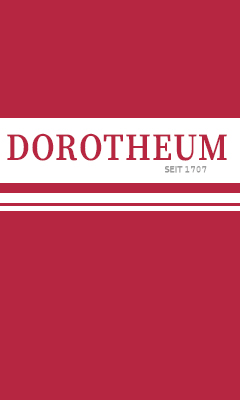
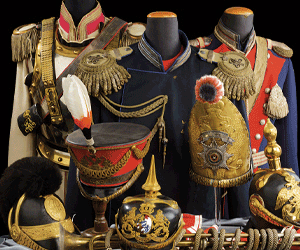
Comments
Sign in to comment and reply.


Scroll Top